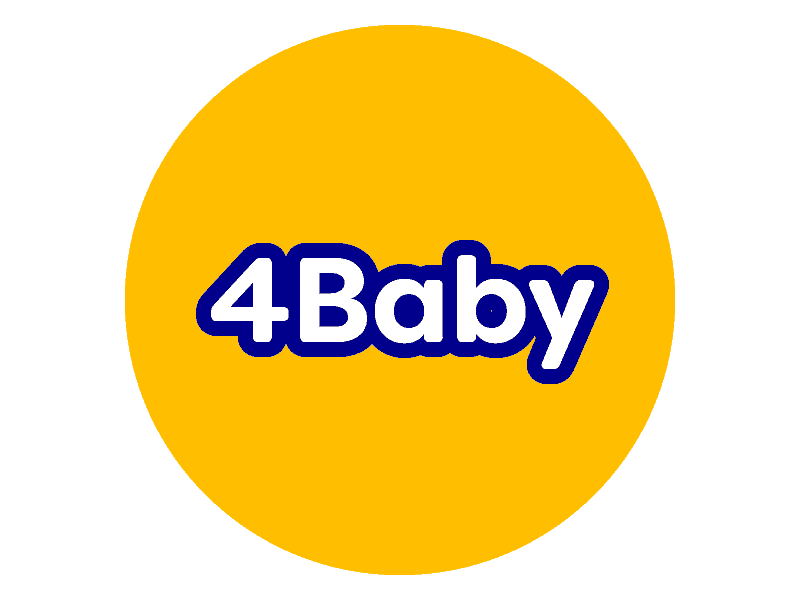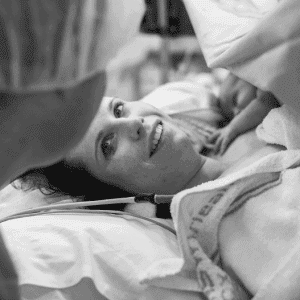Bonding with your newborn
Hannah Tizard
Research Midwife Blackpool Teaching Hospitals NHS Foundation Trust, Editor-in-Chief The Student Midwife Journal and Founder BloodtoBaby.com
@midwifetiz
Summary
From the special moment a new mother hears her baby’s first cry, a crucial process of bonding that began at conception begins to take on a whole new importance. Regardless of your race, gender, sexuality, culture, or ethnicity, the bonding between a newborn and mother is a beautiful, natural process that has occurred from the beginning of time.1 This article describes that process and provides tips and resources to help you maximise this experience
Happy hormones; for mum and baby
Did you know that your body produces a very important chemical – called oxytocin? It’s a happy hormone, associated with lovemaking and is released from your brain during human contact, such as a hug. The postnatal period (first three months following birth) is often referred to as the fourth trimester and oxytocin is ascrucial during the postnatal period as it is in birth.
During the process of bonding with your newborn, oxytocin helps to reduce undesirable symptoms that may be experienced by new mothers, such as anxiety or stress which often comes with the transition to being a new parent.2 Oxytocin aids in creating a sense of comfort for the baby while also helping a mother’s response of affection and attention.2
The human interactions that a baby experiences during these early days plays a large role in the development of a newborn’s control systems and permanent organisation of the brain.1 A large part of the bonding experience can be attributed to the role of oxytocin. Therefore, it is especially important to maximize the release of oxytocin during labour and during the postpartum period.1
Whilst this article focuses on how to increase bonding, it is recognised that there are situations that occur, such as a premature birth, lifestyle factors or existing mental health issues which can sometimes influence initial bonding ability. Sometimes women don’t immediately feel a connection to baby, sometimes baby’s need to be separated from their mother for periods of time. It’s important to know that attachment can happen later and that these tips can be used at various intervals following birth.
Breastfeeding
Oxytocin is released during breastfeeding which enhances the bonding process. A study found there is a correlation between a woman bonding well with her baby and the amount of oxytocin found in her blood.3
Important mothering moments:
- The touch of the newborn’s lips on the mother’s nipple has been found to raise oxytocin levels shortly after birth.4
- The unique smell of a mothers newborn baby becomes more familiar and attractive which increases oxytocin levels.2
- Mothering instincts such as affectionate parenting behaviours, a soft and soothing vocal tone, the expression of positive affect, and affectionate touch are associated with breastfeeding and oxytocin.3
- Whether breastfeeding or not, eye contact between you and your baby during the first hour after birth is helpful for bonding.1
- If your baby is not being breastfed, it is important for you to bottle feed your baby at each feeding, rather than anyone else as this promotes a close and loving relationship between you and your baby.7
Skin to skin contact at birth
The first hour of life after birth is known to be an optimal opportunity to encourage the release of oxytocin and for the maternal-newborn bonding process to occur. However, this crucial window of time is often taken up by various midwifery procedures such as weighing the baby, newborn assessments and all of these can disrupt the bonding process. Therefore, it is critically important for all those involved in the childbirth process including parents, midwives, and doctors to be aware of the importance of uninterrupted skin to skin contact in maternal-newborn bonding.
Important mothering moments:
- Skin to skin helps in the development of the newborn’s brain activating emotional learning and in seeking love.5
- Your baby is born knowing the smell of amniotic fluid which is similar to the scent of the mother’s breast. Skin to skin helps the baby’s instinctive desire and early experience of learning to breastfeed.1
- Laying your baby on your chest after birth is an excellent distraction to the any uncomfortable post birth feelings being experienced (such as the after pains of the uterus contracting down).1
- Skin to skin helps to reduce both mother and baby’s stress levels.6
- Skin-to-skin contact immediately following birth also offers physical benefits for baby which you may find comforting. It helps the newborn to stabilise temperature and heart and respiratory rate, reduces newborn crying and enhance maternal-newborn attachment.1
- Have a discussion with your midwife about your wishes for uninterrupted skin to skin contact for at least the first hour after birth.
Massage and touch
Maternal-newborn bonding can also result from positive moments of maternal- touch-massage during the first hour after birth.2 This increases bonding and relaxation. Massage that consists of gentle pressure stroking to the shoulders, back, head, legs, and arms is pleasurable for the baby.
Important mothering moments:
- Ask the midwife to help you to familiarise yourself with your baby through fingertip exploration of your baby from head to toe.
- Use specialist and well-made massage oils such as Weleda’s Calendula Baby Oil (a fragrance-free baby oil). This formulation with pure, precious plant oils envelops delicate skin, gently cares for it and promotes its healthy development. Please see specialist blog on baby massage for more information.
How can your midwife help?
An interactive relationship between the midwife and the mother is an excellent way to promote maternal-newborn bonding. The midwife can promote maternal-newborn bonding by encouraging you to participate in your baby’s care as much as possible.
All hospitals now promote the mother and baby to stay in the same room instead of the newborn staying primarily in a nursery after birth. This supports the midwife to teach and role model the care of the newborn so that you have time to bond with your baby and learn to care for him or her in a supportive environment.
Midwives will encourage you to be involved in any necessary interventions (such as a baby requiring blood sugars or medicines), planning, and evaluation with choices offered.
The midwife is an essential part of education about breastfeeding, always encouraging on-demand responsive feeding.
These efforts to encourage your involvement will increase your self-confidence in parenting a newborn. Midwives should offer positive feedback as you provide care for your newborn. It takes time, trial, and error for both mother and baby to know what to expect of the other and how to meet each other’s needs.
Final thoughts
Becoming a mother is a life-transforming process but preparing well and having good knowledge and understanding will help make your transition smoother. Certainly, including oxytocin promoting bonding efforts will help further. Please find further sources of support linked below.
Links to resources
 Video/Audio
Video/Audio
Introduction to infant/baby massage class-Leg massage routine
Unicef UK Baby Friendly Initiative | Meeting baby for the first time
Dr. Nils Bergman – KMC: Physiological response, cultural & practical challenges in field settings
 Academic articles
Academic articles
The importance of early bonding on the long-term mental health and resilience of children
 Websites
Websites
UNICEF Breastfeeding resources
Weleda Skin Contact in Baby Care Article
Unicef UK Baby Friendly Initiative | Importance of relationship building
References
- Little K, Turner T, Wheeler D, Gadomski M.Promoting Maternal-Newborn Bonding During The Postpartum Period. Liberty University; 2015. https://pdfs.semanticscholar.org/344f/d11189119f63c9014fb32c9accfa47d469e3.pdf. Accessed April 12, 2020.
- Feldman R, Gordon I, Zagoory-Sharon O. Maternal and paternal plasma, salivary, and urinary oxytocin and parent-infant synchrony: considering stress and affiliation components of human bonding.Dev Sci. 2010;14(4):752-761. doi:10.1111/j.1467-7687.2010.01021.x
- Gordon I, Zagoory-Sharon O, Leckman J, Feldman R. Oxytocin and the Development of Parenting in Humans.Biol Psychiatry. 2010;68(4):377-382. doi:10.1016/j.biopsych.2010.02.005
- Himani B, Kumar P. Effect of initiation of breast-feeding within one hour of the delivery on “maternal- infant bonding.”Nursing and Midwifery Research Journal. 2011;7(3). http://medind.nic.in/nad/t11/i2/nadt11i2p53.pdf. Accessed April 12, 2020.
- Moxham L, Hazelton M, Muir-Cochrane E, Heffernan T, Kneisl C, Trigoboff E.Contemporary Psychiatric-Mental Health Nursing. 3rd ed. Upper Saddle River: Pearson Education, Inc.; 2013.
- Arivabene J, Tyrrell M. Kangaroo Mother Method: Mothers’ Experiences and Contributions to Nursing.Rev Lat Am Enfermagem. 2010;18(2):262-268. doi:10.1590/s0104-11692010000200018
- Infant formula and responsive bottle feeding – Baby Friendly Initiative. Baby Friendly Initiative. https://www.unicef.org.uk/babyfriendly/baby-friendly-resources/bottle-feeding-resources/infant-formula-responsive-bottle-feeding-guide-for-parents/. Published 2020. Accessed April 12, 2020.









